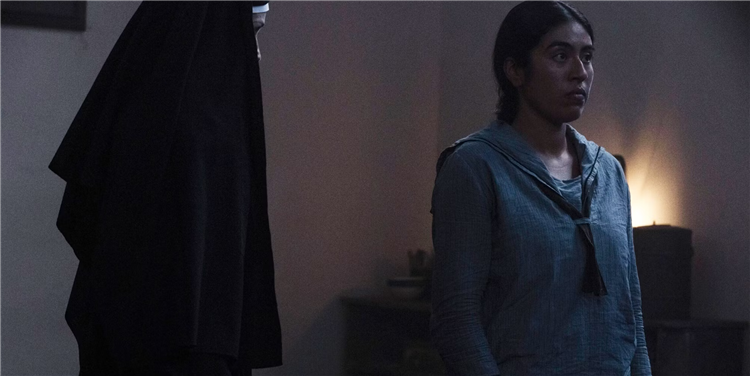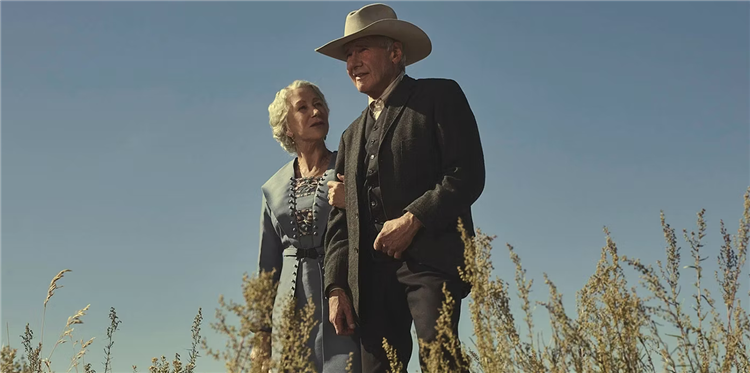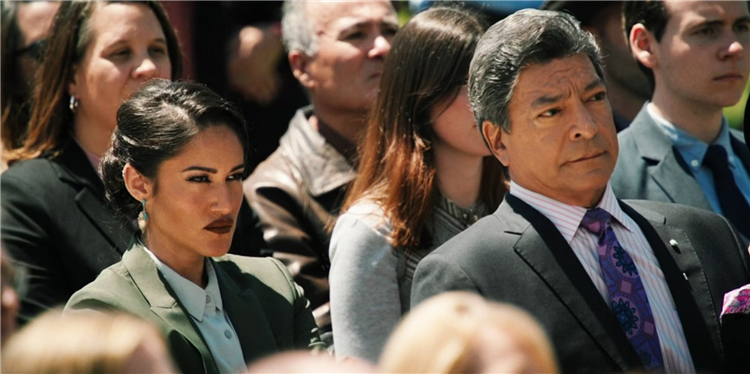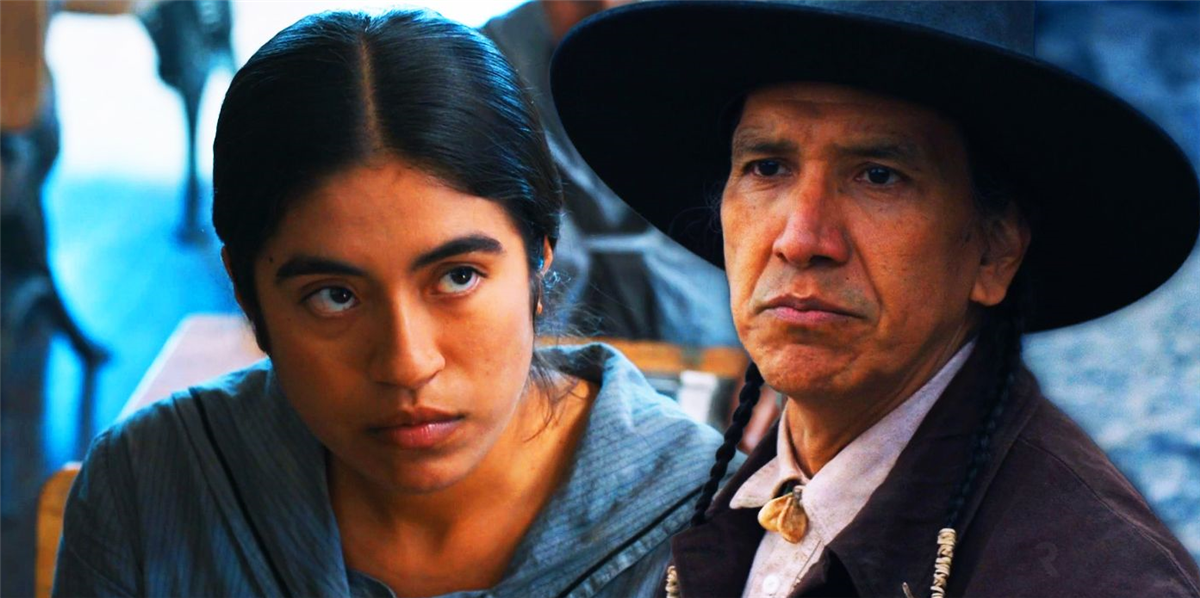Unveiling the dark truth behind Catholic boarding schools for Indigenous Americans and their impact on the storyline of 1923 Exploring the haunting parallels between history and Yellowstone’s powerful scenes Is Teonna linked to Chief Thomas Rainwater?
The Dutton’s storyline may be filled with violence, but the most chilling moments in the show revolve around the so-called Indian Schools in 1923. What makes these scenes even more horrifying is the fact that they are based on real events. They shed light on the physical and emotional abuse that Indigenous American youth endured in Catholic boarding schools in Montana. Teonna, the main character, is subjected to beatings and brutality for the smallest of mistakes in her lessons, for speaking her Native language, and for any excuse Sister Mary can find to strip away her humanity. Teonna fights back against her oppressors, only to face more violence from those in charge of the Indian Schools.
Regrettably, the portrayal of 1923 accurately reflects the horrific reality of what took place within these boarding schools. Set up by Western settlers, these institutions aimed to forcibly assimilate Indigenous communities that had been displaced by America’s Westward Expansion. The cast and characters in 1923 find themselves in the darkest corner of the Yellowstone story yet, grappling with a time when cases of abuse in Catholic boarding schools were prevalent not just in the United States, but also in Canada. While disturbing, the scenes from 1923 play a crucial role in the overall narrative.
The Real History Of Catholic Boarding Schools For Indigenous Americans

Father Renaud and Sister Mary’s mistreatment of Teonna is rooted in the historical accounts of “American Indian boarding schools,” which emerged in the mid-1800s. While the Fort Shaw Indian School was the sole institution of its kind in Montana, approximately 200 more of these schools were established in almost 30 states across the United States since the 1840s. States such as Oklahoma, Minnesota, and South Dakota saw a higher concentration of these schools.
The primary objective of these schools was to assimilate Indigenous youth into white Western culture by eradicating their language and cultural identity. Additionally, they sought to baptize the students into Christianity and replace their tribal names. This deliberate erasure of Indigenous American children’s heritage led to inhumane treatment across multiple generations. In a 1923 interview with Screen Rant, Jennifer Ehle, the actress portraying Sister Mary, explained, “Sister Mary embodies the belief held by those in charge of these residential schools – the belief that you had to ‘kill the Indian to save the man.’ The idea was to enforce assimilation by stripping away any trace of cultural identity from these children, who had been forcefully separated from their families and placed in isolation.”
Though most of these boarding schools have either been closed or heavily reformed since the late 20th century, the culture of abuse fostered by these institutions has left permanent scars in the history of America’s Indigenous nations. While the scenes of abuse in 1923 are jarring, Aminah Nieves who plays Teonna says that it’s a tale that needs to be tackled: “Yeah, it’s difficult. However, as indigenous people, it is our responsibility to recount our stories and do so with strength, speed, and power. It is innate to us, we are storytellers from the beginning. Do you understand what I’m saying? Continuing to honestly communicate our story is of utmost importance.”
Is 1923 Based On A True Story?

The TV series 1923 revolves around the Duttons and their unwavering determination to keep the Yellowstone Dutton Ranch thriving in the face of adversity during the harshest and most trying period in Montana’s history. While the storyline is entirely fictional, it draws heavily from real events in American history. Notably, it sheds light on the distressing mistreatment of children like Teonna, who suffered abuse at the hands of nuns and priests in boarding schools. Moreover, it delves into the growth of ranching in Montana amidst the Great Depression and Prohibition, as well as the profound impact of the Great War. As season 2 progresses, the prequel, set in a turbulent era when the federal government openly supported boarding schools aimed at eradicating Indigenous cultures, promises to delve even further into the dark underbelly of America’s 1920s history.
Why The 1923 Indian School Contextualizes Yellowstone

The Indian Schools in 1923, a cruel establishment, not only serve as a haunting aspect of the series, but also provide important context for the original Yellowstone series. Thomas Rainwater has consistently been portrayed as one of the main antagonists of John Dutton since the first episode. His desire to obtain the Yellowstone ranch and his open contempt for the white people fighting over the land, which he believes belongs to his people, has positioned him as a villain in the eyes of the audience. However, it is possible that Thomas Rainwater may actually be the true hero of Yellowstone.
The inclusion of scenes depicting the Indian Schools in 1923 by Taylor Sheridan and the show creators suggests a deeper understanding behind Thomas Rainwater’s fight against the Duttons. It showcases that his motivations extend far beyond simply claiming land. His cause stems from generations of cruelty, abuse, and murder suffered by his people at the hands of white individuals, who now ironically complain about others attempting to take their own land. This deeper contextualization hints towards a potential endgame for the entire Yellowstone universe. While the narrative has always revolved around the generations of Duttons fighting, killing, and sacrificing their lives to protect what they believed was their land, delivering a poignant final message that it was never truly theirs to begin with. Therefore, Thomas Rainwater’s eventual triumph would not only feel thematically appropriate, but also bring closure to the series.
How Aminah Nieves And Jennifer Ehle Explain The 1923 Boarding School Scenes

The filming process for the intense scenes in the notorious Indian School in 1923 was just as expected – harrowing. Aminah Nieves and Jennifer Ehles, in an interview with TV Insider, shared their experiences during filming. On their first day, they filmed the scene where Sister Mary beats Teonna in the classroom. Considering the intensity of the scene, the set was created in a respectful manner. Nieves mentioned that there were clear boundaries established and both actors handled it well, giving each other space when required.
The actors also discussed the perspectives of their characters during the violent confrontation. Nieves explained that Teonna didn’t enjoy hurting Sister Mary, even though it was a form of retribution for the nun’s cruelty. She stated that it wasn’t an action Teonna desired, but rather one she felt compelled to do in order to save herself and everyone else in the room. On the other hand, Ehles revealed that Sister Mary saw herself as a protector, albeit in a misguided way, truly believing that this was the best way to help the girls. However, Ehles also acknowledged that Sister Mary’s beliefs stem from her ignorance and emotional damage.
Even with the challenging nature of the scenes, Nieves expresses her pride in being able to bring these stories to a wider audience and emphasizes the importance of discussing them as a part of history. She acknowledges that the impact of these stories has affected generations and will continue to do so, stating, “It’s something that remains with us whether we embrace it or not. It will endure with our children as well.” Furthermore, Nieves conveys the sense of responsibility she feels in shedding light on a story like this, affirming, “By doing this, we fulfill our duty and contribute to something truly significant. I am incredibly grateful to be here, to have the opportunity to share our stories.”
Is Teonna Related To Yellowstone’s Chief Thomas Rainwater?

Teonna’s potential connection to Chief Thomas Rainwater from Yellowstone’s spin-off series, Broken Rock, is intriguing. Both characters, despite their positions of authority, face significant adversity in their respective shows, highlighting the unchanged mistreatment of Indigenous Americans by the white government since the 1800s. While 1923 and Yellowstone celebrate the Duttons as heroic figures in American history, the portrayal of Indigenous Americans in both series reveals the true villains within the Yellowstone universe.
Despite the ongoing debate surrounding Taylor Sheridan’s political beliefs, it is undeniable that the series Yellowstone, set in 1923, is approaching America’s dark history with great respect and accuracy. In addition, there are hints that Teonna may be linked to Chief Thomas Rainwater, as she may eventually bear the Rainwater surname. Given Teonna’s challenging experiences thus far, it is understandable why Angela Blue-Thunder vehemently criticized the Broken Rock chief for not taking stronger action against those trespassing on their sacred land in Yellowstone.
